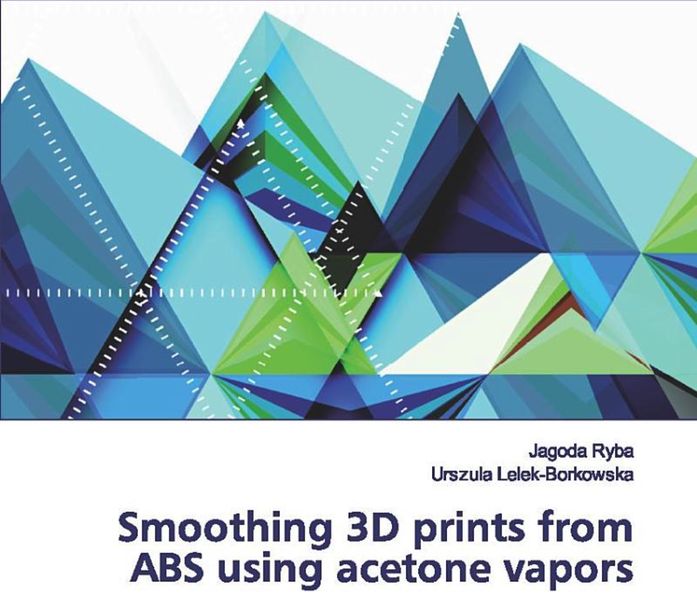
This week’s selection is “Smoothing 3D prints from ABS using acetone vapors” by Jagoda Ryba and Urszula Lelek-Borkowska.
Smoothing is a feature that’s desirable on many 3D prints. It’s that way because of the nature of 3D printing itself: almost every 3D printing process known today uses a layer-by-layer approach.
Material is deposited, fused or solidified only one layer at a time, resulting in a 3D print having poor surface quality. The edges of each layer are often quite visible in typical 3D prints, and even if they aren’t visible you can often feel them.
Compared to standard injection molded parts, which often have mirror-like finishes, 3D prints can seem very rough.
There are ways around this issue, some easier than others. Some will iteratively use gradually finer sandpaper to smooth a surface. With enough work, one can achieve a mirror finish, but that’s often not possible due to awkward part geometries or simply the tremendous amount of manual labor involved.
It’s possible to use vibratory media to knock down the layer edges, and that’s possible for parts with few delicate structures.
But one way that is often used to overcome these challenges is acetone smoothing, usable on only ABS and ASA materials.
The key to this technique is that ABS / ASA actually dissolve in the presence of acetone. Thus, if you apply it with care it’s possible to soften the jagged layer-ey surface of a 3D print and the small surface area that’s softened will flow into a smooth new surface.
That sounds fine in theory, but how, exactly do you do this in practice? Do you dip the 3D model into a tub of acetone? Do you paint it on the surface? How much do you apply? How long should it be exposed? What if you do too much?
These questions are answered in a short book by Ryba and Lelek-Borkowska, where they investigate the science behind this effect. Specifically, their assignment was to determine a smoothing process for a 3D printed hip joint 3D model, which was intended to be used in a molding process.
Their work explains the process and chemistry behind the smoothing process, and then explores the results of several smoothing experiments.
They attempted to smooth a part using liquid acetone; exposure to acetone vapors at varying temperatures; wiping with cotton fabric and other techniques. One interesting technique they evaluated was the use of “ABS Juice”, a strong mix of acetone and ABS material that forms into a liquid that can be painted onto a 3D print.
For anyone considering use of acetone smoothing on their ABS 3D prints, this might be a book worth exploring, as it will show scientific results of several experiments.
We’re an Amazon Associate and earn a small fee from qualifying purchases. Help support our 3D print news service by checking out this book!
Via Amazon
